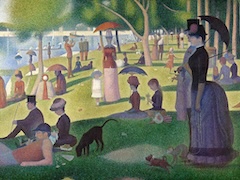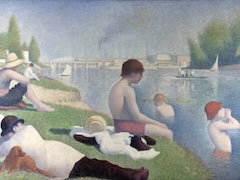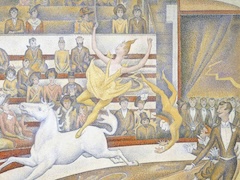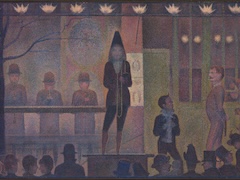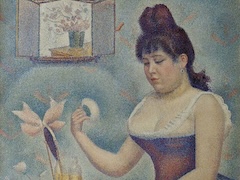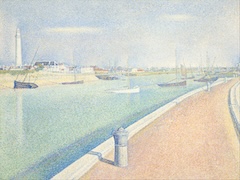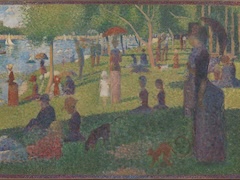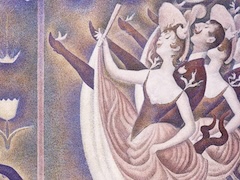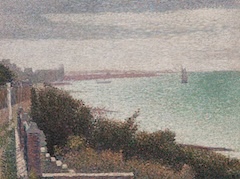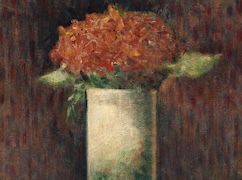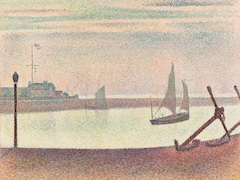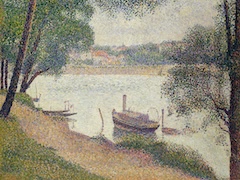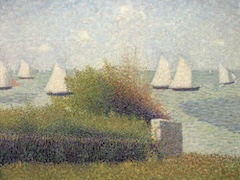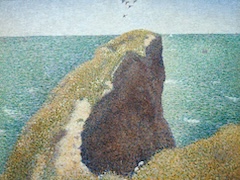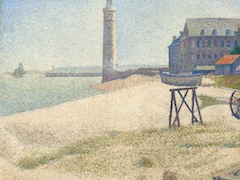The Models by Georges Seurat
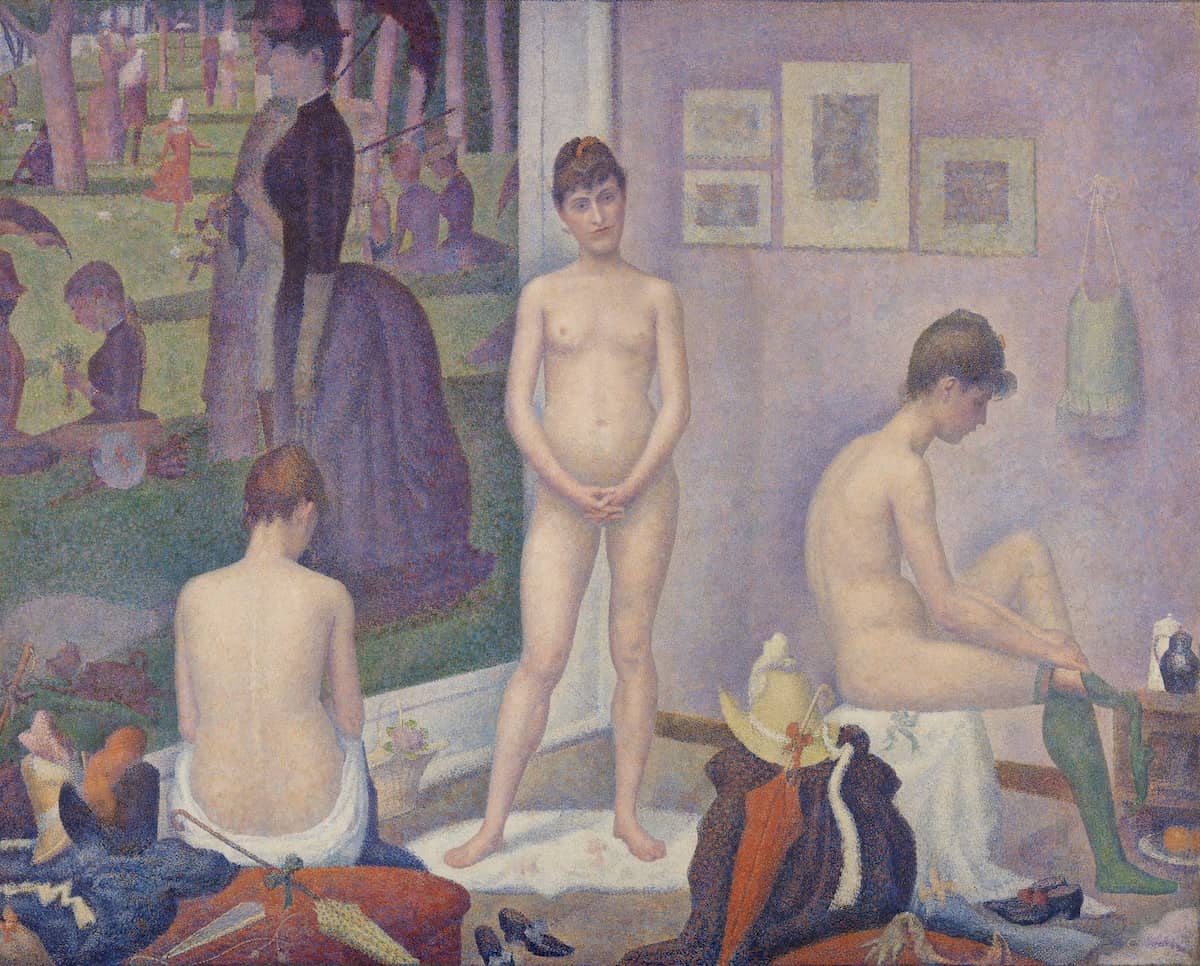
Here the model is shown, with great freshness and resonance, in the three stages: undressing (right), posing (center), and resting (left). The simultaneity with which the whole cycle has been conceived is admirable. The painting La Grande Jatte on the wall behind the model at left reminds us of the purpose of the exercise. In this studio scene, the atmosphere is calm and untroubled.
This is a refined work. Seurat may have painted it at the urging of Felix Feneon. The latter maintained that Pointillism could best justify itself when it suggested naturally smooth forms.
Seurat went through a long period of uncertainty about this painting and made several preliminary oil studies for it, and also drawings of the hat, coat, and parasol against the stool, as well as of the standing model.
The definitive painting, in the Barnes Foundation at Merion, Pennsylvania is much more studied, much more deliberate than the small version reproduced here - which, however, was painted after the big one. In it, Seurat partly took into account Signac's criticism that the brush strokes in the "great empty spaces" of the Barnes version were too small.
Art critics Roger Fry greatly admired the musical composition of The Models and said that it would be impossible to shift a ribbon or a button in it without unbalancing the whole work. A critic of the period described the figures as "lamentable rickety skeletons, daubed with every shade of the rainbow," whereas Paul Adam spoke of the "tiny breasts of young girls and the nacreous whiteness of their soft skins." As for Felix Feneon, he said that this work "puts to shame the nudes we remember from galleries and legend."
In reply to Octave Maus, who asked Seurat what price he was setting for the large version of The Models, the artist wrote that it would have to include his living expenses for one year at seven francs a day.

